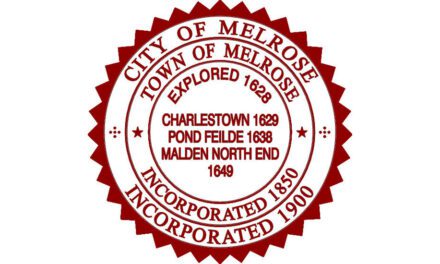Another in a series of “Around Town” columns.
Published June 21, 2019
MELROSE — The Middlesex Fells reservation has been aptly described as a unique flourishing urban forest of 3,400 acres. Managed by the Massachusetts Department of Conservation and Recreation, this “gem” in our back yard was created in 1894 and supported for over a quarter century by The Friends Of The Middlesex Fells reservation located here in Melrose. The Weekly News caught up with Friends Executive Director, Ron Morin to discuss the past, present and future of our urban park.
What is the Friends of The Fells mission?
To promote, protect and preserve the Middlesex Fells Reservation.
What constitutes the Middlesex Fells Reservation?
The Fells is in five contiguous communities: Melrose, Stoneham, Winchester, Malden and Medford.
Because the park covered several communities there was an authority problem that the state confronted by formally establishing the park with the first acquisition of land in 1894.
How many members does the “Friends” have?
We have 3,000 people who stay in contact with us and approximately 1,000 active members. It’s a membership driven organization.
So anyone can join?
Oh sure, individual membership is $25 and $40 a year for a family. The membership pays for our stewardship of the fells. We don’t really get money from anyone else. No contracts or corporate sponsors. This is a membership driven organization.
All the work we do to preserve, protect and create programming in the Fells, really that money comes from our membership. It’s our life blood.
What programming do you offer?
In the summer we have summer camp. It’s not a book learning academic setting, rather more in line with youth and opportunities to learn from what our forest offers. We have one instructor for every five children and we follow where their curiosity takes them.
So this is really a hands on experience for both the children and their instructor?
Most definitely. We teach to where the kids go. So if a kid picks up a rock and wants to know something about it the instructor talks a little bit about the geology , the formation of the rock. If they find a flower they talk about the botany. If they see a bird flying they talk about that. But the kid is the leader of the program.
So the instructors go where the kid’s interest takes them?
Right. And that is very conscious and purposeful. Children have remarkable curiosity and it’s amazing what they can learn.
The Summer Camp runs from the last week of June through the last week of August. There are three possibilities. You can do a half a day in the morning, a half day in the afternoon or a whole day.
What other programming to you have?
There are so many. Babes in the Woods is an adult-paced hike designed for parents who carry their children. Pollinator, a bird and plant monitoring program, Hike ‘n’ Seek – a nature-themed scavenger hunt for young hikers and their parents. We have a Protecting Vernal Pools in the Fells program which is very popular.
We encourage everyone to visit us at www.friendsofthefells.org for our calendar of events and to just check us out.
How threatened is the Fells?
All kinds of threats. There are 22 invasive species in the fells. To attack this problem we started this year an invasives brigade. Our volunteers go into the Fells and control all of the invasives that are killing trees and doing damage to the native plants that are in there.
How does an invasive plant, such as Ornamental Bitter Sweet, become such a threat?
There are 180,000 people that live within a mile of the fells. And when they start putting plants in gardens, such as Ornamental Bitter Sweet which originally came from another country, the seed will blow into the Fells and take hold. These invasive species will literally choke a tree to death.
Are there other threats?
There’s pollution. There’s development. A hockey arena was planned for the Winchester/Medford line right in the middle of vulnerable park land. We were able to stop that.
Are there any threatened animal species?
The big problem we have right now is the disappearance of the butterfly. That’s why we started pollinator gardens to specifically attract butterflies and help them thrive. As with bees, butterflies are incredibly important in ecology and how pollen gets distributed to plants that we eat. When you start losing butterflies our food sources are threatened.
Soon we will have a brochure for home owners around the Fells to create gardens that encourage this.
What is interesting about the biodiversity of the Fells?
The thing about the Fells that is interesting is that we have 25 different scientifically significant different habitat. And each one has its own categories of species within it. Which is very unusual.
Forest, meadows, vernal pools. One area, has seven different species of nesting of Warblers. We have Grosbeaks, Orioles, Chickadees, Scarlet Tanager. Hawks. Really dozens of bird species.
And trees and other plants?
We have Scrub Oak, Hemlock, many different kinds of pine trees. Sweet Pepper bush. A rare orchid native to New England, the downy rattlesnake – plantain, was recently rediscovered after an elusive 20 year search.
Unfortunately, Old growth forest is gone. About 90 percent of the Fells had been logged. There were several saw mills in the 1800’s. There are 43 historic remnants and archeological sites in the Reservation.
Wildlife is surely abundant?
The fauna is countless. Everything from wild turkeys to toads, coyotes to snapping turtles. Mink and salamanders. A black bear was spotted a few months ago.
Any other sightings?
Humans! We like to see lots of people enjoying the Middlesex Fells Reservation.




